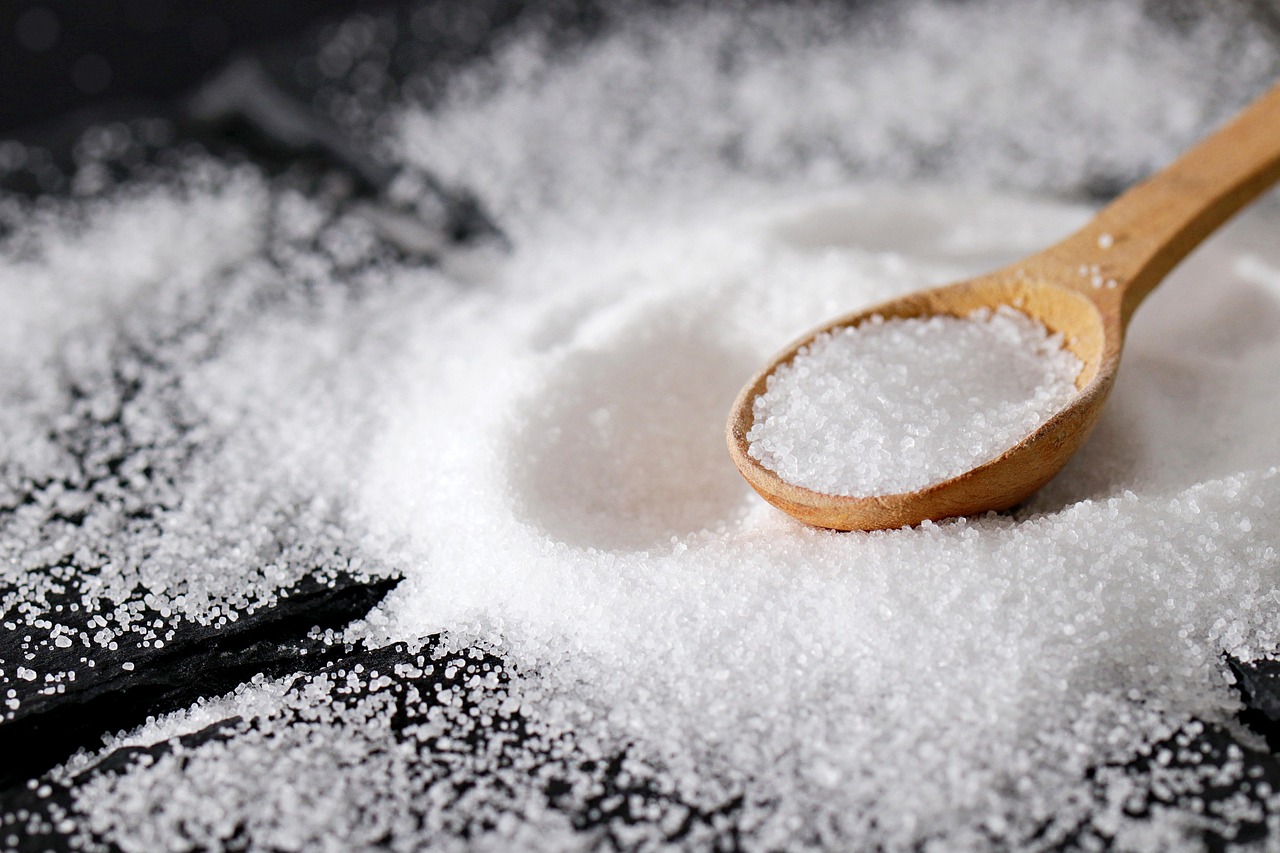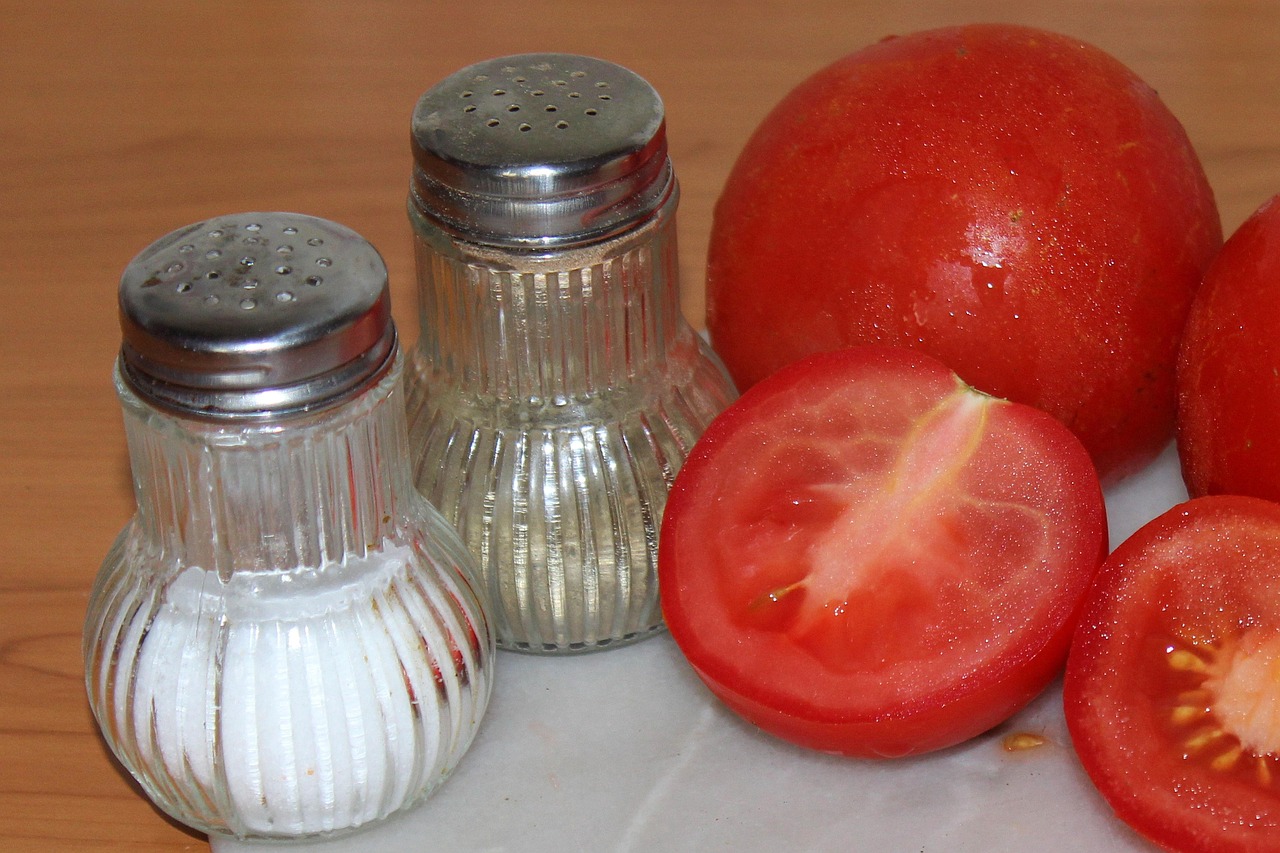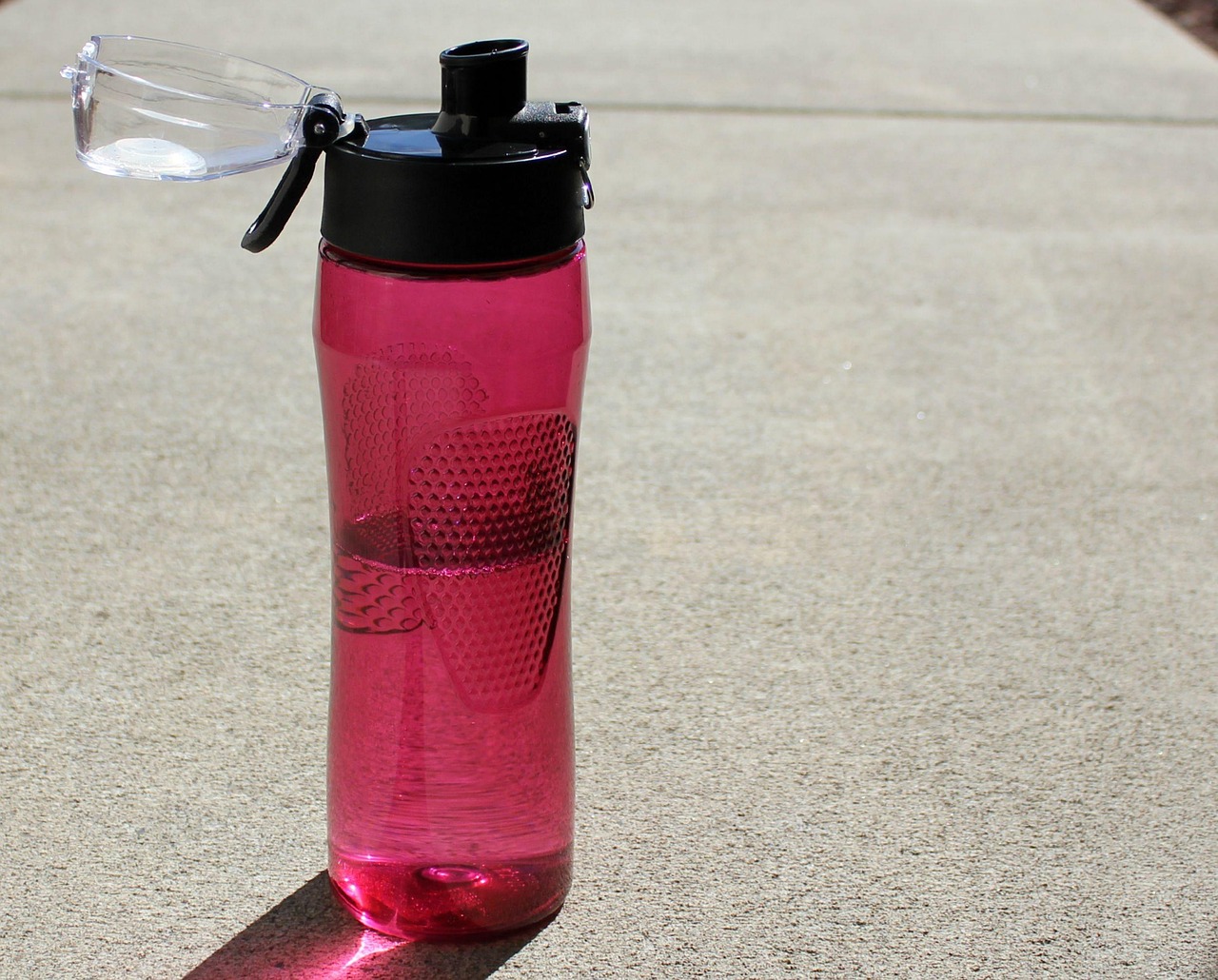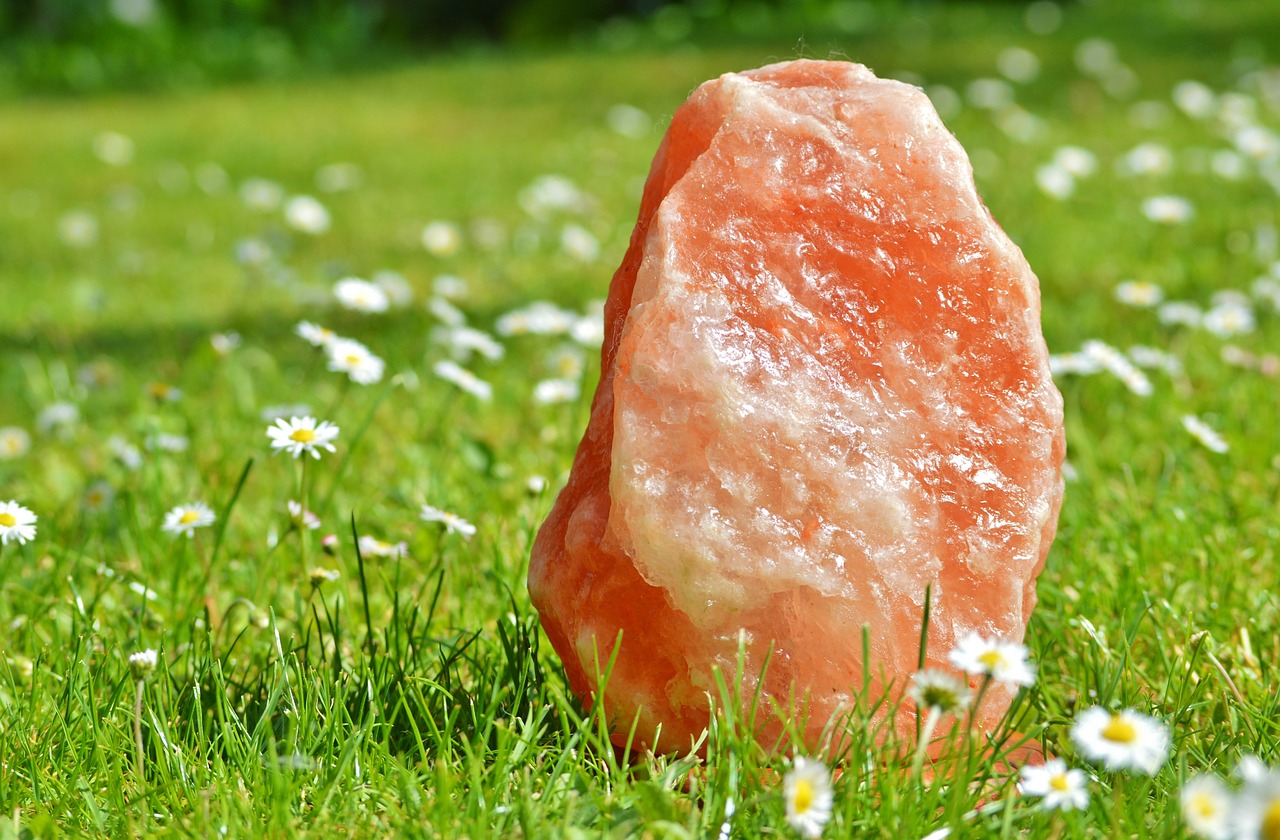This article delves into the complexities of water retention, often referred to as edema. It examines the underlying causes, the physiological effects on the body, and presents effective strategies to alleviate the condition swiftly, all supported by scientific research and practical advice.
What is Water Retention?
Water retention occurs when excess fluid accumulates in the body’s tissues, leading to swelling and discomfort. Understanding the mechanisms behind this phenomenon is crucial for effective management and prevention. Edema can manifest in various forms, affecting different parts of the body, including the legs, arms, and abdomen.
Common Causes of Water Retention
Several factors contribute to water retention. Identifying these causes is essential for implementing effective solutions:
- Hormonal Changes: Fluctuations in hormones, particularly during menstruation or pregnancy, can lead to significant fluid retention.
- Dietary Choices: High sodium intake and certain food sensitivities can exacerbate water retention.
- Medical Conditions: Conditions such as heart failure, kidney disease, and liver dysfunction can lead to edema.
Hormonal Influences
Hormonal changes play a critical role in fluid retention. For instance, during the menstrual cycle, women may experience increased levels of estrogen and progesterone, which can lead to bloating and discomfort. Similarly, pregnancy can trigger hormonal shifts that result in increased blood volume and fluid retention, particularly in the legs and feet.
Dietary Factors
Certain foods can worsen water retention. High-sodium foods, processed meals, and excessive sugar intake can cause the body to hold onto more fluid. Conversely, incorporating potassium-rich foods like bananas and leafy greens can help balance sodium levels and promote diuresis.
How to Identify Water Retention
Recognizing the signs of water retention is vital for effective management. Common symptoms include:
- Swelling in extremities
- Abdominal bloating
- Weight fluctuations
Physical symptoms can vary, but noticeable swelling and discomfort are key indicators. Medical professionals may utilize diagnostic methods such as physical examinations and imaging tests to assess the severity and underlying causes of water retention.
Effective Strategies to Reduce Water Retention
Implementing effective strategies can significantly alleviate symptoms of water retention:
- Dietary Adjustments: Incorporating diuretic foods like cucumbers, watermelon, and asparagus can help reduce water retention. Staying adequately hydrated is also crucial, as it helps the body maintain fluid balance.
- Exercise and Physical Activity: Regular physical activity enhances circulation and promotes fluid movement. Engaging in activities such as walking, swimming, or yoga can be particularly beneficial.
When to Seek Medical Advice
While water retention is often benign, persistent or severe cases may indicate underlying health issues. It is crucial to recognize when to consult a healthcare professional:
- Signs of Serious Conditions: Persistent swelling, shortness of breath, or localized pain may signal serious health issues requiring immediate medical attention.
- Medical Treatments: In some cases, healthcare providers may prescribe diuretics or other medications to manage water retention effectively. Consulting with a healthcare provider ensures appropriate care tailored to individual needs.
In conclusion, understanding the causes and effects of water retention is essential for effective management. By implementing dietary changes, increasing physical activity, and recognizing when to seek medical advice, individuals can effectively reduce water retention and improve their overall well-being.
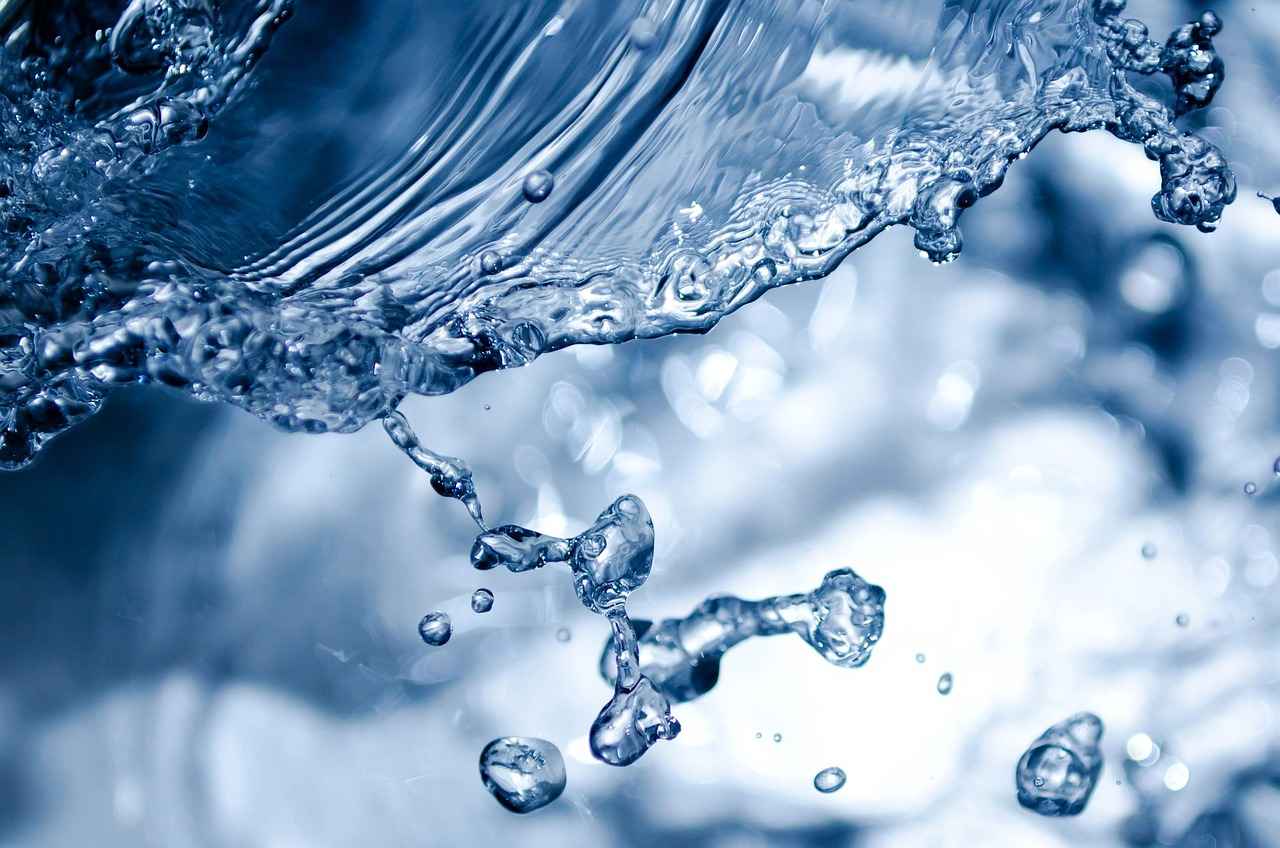
What is Water Retention?
Water retention, also known as edema, is a condition characterized by the accumulation of excess fluid in the body’s tissues. This phenomenon can occur in various parts of the body, including the legs, arms, and abdomen. Understanding the underlying mechanisms of water retention is crucial for effective management and prevention.
Edema can manifest in different forms, ranging from mild swelling to more severe conditions that may require medical attention. It is essential to recognize the symptoms early, as this can lead to timely interventions and improved quality of life.
Several factors can contribute to water retention. Identifying these causes is vital for implementing effective solutions. Below are some common triggers:
- Hormonal Changes: Hormonal fluctuations, especially during the menstrual cycle or pregnancy, often lead to increased fluid retention. Estrogen and progesterone play significant roles in this process.
- Dietary Habits: High sodium intake can cause the body to retain more water. Processed foods, fast food, and certain condiments are notorious for their sodium content.
- Medical Conditions: Various health issues, such as heart failure, kidney disease, and liver disorders, can lead to significant fluid retention. It is crucial to monitor these conditions closely.
- Medications: Some medications, including certain blood pressure drugs and nonsteroidal anti-inflammatory drugs (NSAIDs), may cause edema as a side effect.
Recognizing the signs of water retention is essential for effective management. Common symptoms include:
- Swelling: Noticeable swelling in the legs, feet, or abdomen.
- Weight Fluctuations: Sudden increases in weight can indicate fluid accumulation.
- Tightness: A feeling of tightness in the abdomen or extremities.
Implementing effective strategies can significantly alleviate symptoms of water retention. Here are some practical tips:
- Dietary Adjustments: Incorporating foods rich in potassium, such as bananas and spinach, can help balance sodium levels and promote diuresis. Staying hydrated by drinking adequate water is equally important.
- Regular Exercise: Engaging in physical activity enhances circulation and helps the body eliminate excess fluid. Activities like walking, swimming, or yoga can be particularly beneficial.
- Compression Garments: Wearing compression stockings can help reduce swelling in the legs by promoting better blood flow.
While water retention is often benign, persistent or severe cases may indicate underlying health issues. It is crucial to consult a healthcare professional if you experience:
- Persistent Swelling: If swelling does not subside or worsens over time.
- Shortness of Breath: Difficulty breathing may signal serious conditions requiring immediate attention.
- Unexplained Weight Gain: Rapid weight gain without a clear reason can be concerning.
In conclusion, understanding water retention is essential for effective management. By recognizing the common causes, identifying symptoms, and implementing practical strategies, individuals can take proactive steps to reduce fluid retention and improve their overall health.

Common Causes of Water Retention
Water retention, medically known as edema, is a condition marked by excess fluid accumulation in the body’s tissues. Understanding the common causes of this condition is essential for effective management and prevention. Here, we explore various factors that contribute to water retention, including hormonal changes, dietary choices, and underlying medical conditions.
- Hormonal Changes: Hormones play a significant role in regulating fluid balance within the body. Fluctuations in hormones, particularly during the menstrual cycle or pregnancy, can lead to increased water retention. For example, estrogen and progesterone levels rise and fall, causing the body to retain more fluid, which can result in noticeable swelling and discomfort.
- Dietary Choices: Our diet can greatly influence fluid retention. Consuming foods high in sodium can cause the body to hold onto water. Processed foods, fast foods, and snacks often contain excessive salt, which leads to increased thirst and fluid retention. Conversely, a diet rich in potassium can help counteract sodium’s effects by promoting diuresis, or increased urine production.
- Medical Conditions: Several medical conditions can contribute to water retention. Heart, kidney, and liver diseases can impair the body’s ability to regulate fluid balance. For instance, heart failure can lead to fluid buildup in the legs and abdomen, while kidney dysfunction may prevent the proper excretion of excess fluid. It’s crucial to consult a healthcare provider if you suspect that an underlying condition is causing your symptoms.
- Medications: Certain medications, such as nonsteroidal anti-inflammatory drugs (NSAIDs), steroids, and some blood pressure medications, can cause water retention as a side effect. If you notice increased swelling after starting a new medication, it is advisable to speak with your doctor about possible alternatives.
- Lifestyle Factors: Sedentary lifestyles can exacerbate water retention. Lack of movement can lead to poor circulation, making it harder for the body to eliminate excess fluid. Regular exercise can promote better circulation and help reduce the likelihood of swelling.
Identifying the root causes of water retention is crucial for implementing effective solutions. By understanding how hormonal changes, dietary choices, medical conditions, medications, and lifestyle factors contribute to this condition, individuals can take proactive steps to manage their symptoms more effectively.
In summary, water retention can stem from various factors, and recognizing these causes is the first step toward finding relief. Whether it’s adjusting dietary habits, increasing physical activity, or seeking medical advice, taking action can significantly improve your quality of life.
Hormonal Influences
Hormonal fluctuations are a natural part of life, particularly for women, and they can have significant effects on the body, especially regarding fluid retention. Understanding how these hormonal changes influence water retention can empower individuals to manage symptoms effectively.
During different phases of the menstrual cycle, women experience varying levels of hormones such as estrogen and progesterone. These hormones play a crucial role in regulating various bodily functions, including fluid balance. For instance, just before menstruation, estrogen levels peak, which can lead to increased fluid retention, resulting in bloating and discomfort. This is often accompanied by symptoms such as mood swings, cravings, and breast tenderness, all of which are linked to hormonal changes.
Furthermore, during pregnancy, the body undergoes substantial hormonal shifts that contribute to water retention. The increase in blood volume, necessary to support the developing fetus, can lead to swelling, particularly in the legs and feet. The hormone relaxin, which helps prepare the body for childbirth, can also cause the body’s tissues to retain more fluid. This phenomenon, while normal, can be uncomfortable for many women.
To effectively manage water retention related to hormonal changes, it is essential to recognize the signs and symptoms. Common indicators include:
- Swelling in the extremities, particularly the ankles and feet
- Bloating in the abdomen
- Weight fluctuations
Being aware of these symptoms allows individuals to take proactive steps in managing their condition. For instance, maintaining a balanced diet rich in potassium can help counteract the effects of sodium, which is known to exacerbate fluid retention. Foods such as bananas, avocados, and leafy greens are excellent choices.
Additionally, staying hydrated is crucial. Ironically, drinking more water can help reduce water retention, as it encourages the kidneys to eliminate excess sodium and fluids. Regular physical activity also plays a vital role in promoting circulation and reducing swelling. Simple exercises like walking or swimming can be highly effective.
For women experiencing significant discomfort due to hormonal fluctuations, consulting a healthcare professional may be beneficial. They can provide tailored advice and, if necessary, recommend treatments such as diuretics or hormonal therapy to help manage symptoms.
In conclusion, understanding the impact of hormonal influences on water retention is essential for effective management. By recognizing the patterns associated with hormonal changes, individuals can implement practical strategies to alleviate symptoms and enhance their overall well-being.
Menstrual Cycle and Water Retention
During the menstrual cycle, many women experience a notable increase in water retention, a condition often linked to the fluctuations of hormones such as estrogen and progesterone. These hormonal changes can lead to a variety of uncomfortable symptoms, including bloating, swelling, and a feeling of heaviness. Understanding the relationship between the menstrual cycle and water retention can help women manage these symptoms more effectively.
As the menstrual cycle progresses, particularly in the luteal phase (the period after ovulation and before menstruation), estrogen levels rise significantly. This increase can cause the body to retain more fluid, leading to edema in various parts of the body, especially in the abdomen, breasts, and extremities. The rise in progesterone also plays a role, as it can cause the body to hold onto sodium, which in turn leads to water retention.
Many women report feeling particularly bloated and uncomfortable in the days leading up to their period. This discomfort can be exacerbated by other factors such as dietary choices, lack of exercise, and stress. For instance, consuming high-sodium foods can worsen water retention, making it essential for women to be mindful of their diets during this time.
To combat the effects of water retention, several strategies can be employed:
- Stay Hydrated: Ironically, drinking more water can help flush out excess sodium and reduce bloating.
- Limit Sodium Intake: Reducing salt in the diet can help decrease fluid retention. Focus on consuming fresh fruits and vegetables, which are naturally low in sodium.
- Exercise Regularly: Physical activity promotes circulation and helps the body to eliminate excess fluids.
- Consider Herbal Remedies: Some herbs, such as dandelion and ginger, are known for their diuretic properties and may help reduce water retention.
Additionally, wearing comfortable clothing and avoiding tight-fitting garments can alleviate some discomfort associated with bloating. Many women also find relief through gentle abdominal massage or using heat pads to soothe cramping and discomfort.
It’s important to note that while water retention is typically a normal part of the menstrual cycle, persistent or severe symptoms should not be ignored. If water retention is accompanied by other concerning symptoms, such as severe pain or shortness of breath, it is advisable to seek medical advice. In some cases, healthcare providers may recommend diuretics or other treatments to manage severe symptoms effectively.
In summary, understanding the connection between the menstrual cycle and water retention can empower women to take proactive steps to manage their symptoms. By adopting healthy lifestyle choices and being aware of their bodies, women can minimize discomfort and enhance their overall well-being during their menstrual cycle.
Pregnancy and Fluid Retention
Pregnancy is a remarkable journey that brings about numerous changes in a woman’s body, one of which is fluid retention. This phenomenon, medically known as edema, can cause noticeable swelling, particularly in the legs and feet. Understanding the underlying causes and effective management strategies can help expectant mothers navigate this common issue with greater ease.
During pregnancy, the body undergoes significant hormonal shifts. The increase in hormones such as progesterone plays a crucial role in maintaining the pregnancy but can also lead to relaxation of blood vessel walls. This relaxation allows for more fluid to accumulate in the body’s tissues, resulting in swelling. Additionally, the growing uterus exerts pressure on the veins in the pelvis, which can impede blood flow and contribute to fluid buildup in the lower extremities.
Another contributing factor to water retention during pregnancy is the increase in blood volume. As the body prepares to nourish the developing fetus, the volume of blood increases by approximately 50%. This expansion is essential for delivering nutrients and oxygen to the baby but can also lead to an excess of fluid in the tissues, particularly in the later stages of pregnancy.
Pregnant women may notice that their feet and ankles swell more noticeably by the end of the day or after prolonged periods of standing or sitting. This condition is often exacerbated by heat, as warmer temperatures can cause blood vessels to dilate further, increasing fluid retention. Additionally, dietary factors such as high sodium intake can worsen the situation, making it essential for expectant mothers to monitor their dietary habits.
Managing fluid retention during pregnancy involves several practical strategies. Staying well-hydrated is paradoxically one of the most effective methods. Drinking adequate water helps the body maintain a proper fluid balance and can actually reduce the retention of excess fluids. Furthermore, incorporating foods rich in potassium, such as bananas and leafy greens, can help counteract sodium’s effects and promote fluid balance.
Regular physical activity is also beneficial. Engaging in moderate exercise, such as walking or swimming, can improve circulation and help reduce swelling. Elevating the legs when resting can further assist in alleviating pressure on the veins and reducing fluid accumulation.
It is important to note that while mild swelling is typically normal during pregnancy, sudden or severe swelling, especially in the hands, face, or around the eyes, can be a sign of a more serious condition known as preeclampsia. This condition requires immediate medical attention, as it can pose risks to both the mother and the baby.
In summary, fluid retention during pregnancy is a common experience influenced by hormonal changes, increased blood volume, and lifestyle factors. By adopting healthy habits, staying informed, and consulting with healthcare providers, pregnant women can effectively manage this condition and ensure a healthier pregnancy journey.
Dietary Factors
Water retention, also known as edema, can be influenced significantly by . Understanding how certain foods and dietary habits contribute to this condition is essential for those seeking to manage their symptoms effectively. In this section, we will delve into the specific dietary elements that can exacerbate water retention and provide guidance on making informed choices.
One of the primary culprits behind water retention is sodium. Consuming foods that are high in sodium can lead to an increase in fluid retention as sodium causes the body to hold onto water. Processed foods, canned soups, and salty snacks are notorious for their high sodium content. It is advisable to check nutrition labels and aim for low-sodium alternatives.
Excessive consumption of carbohydrates can also lead to water retention. When carbohydrates are stored in the body, they are converted into glycogen, which binds with water. This means that a high-carb diet can cause the body to retain more water. Reducing carbohydrate intake, especially refined carbs like white bread and sugary snacks, can help alleviate water retention.
Similar to carbohydrates, sugar can lead to increased water retention. When blood sugar levels spike, the body releases insulin, which can promote sodium retention. This can exacerbate fluid retention and lead to bloating. Limiting sugary foods and beverages can be beneficial for those experiencing water retention.
Alcohol can also disrupt the body’s fluid balance. It acts as a diuretic, initially causing increased urination, but it can lead to dehydration, prompting the body to retain water. Moderation is key; reducing alcohol intake can help in managing water retention symptoms.
While it may seem counterintuitive, staying hydrated is crucial in managing water retention. When the body is dehydrated, it tends to hold onto excess water as a survival mechanism. Drinking adequate amounts of water and incorporating hydrating foods like cucumbers and watermelon can help maintain a balanced fluid level in the body.
Incorporating diuretic foods into your diet can aid in reducing water retention. Foods such as asparagus, beets, and celery can help promote urine production and reduce fluid buildup. Additionally, fruits like lemons and berries are known for their diuretic properties and can be beneficial in managing water retention.
Maintaining a balanced diet rich in potassium can help counteract the effects of sodium and promote fluid balance. Foods high in potassium include bananas, sweet potatoes, and spinach. These foods help to regulate sodium levels in the body, which can reduce water retention.
Another important aspect of dietary management is portion control. Overeating, even healthy foods, can lead to bloating and discomfort. Paying attention to portion sizes can help manage overall caloric intake and prevent excessive water retention.
By understanding the impact of dietary choices on water retention, individuals can make informed decisions that promote better health. Implementing these dietary adjustments can lead to a noticeable decrease in symptoms, ultimately improving overall well-being.

How to Identify Water Retention
Identifying water retention is crucial for managing its effects and understanding your body’s signals. Water retention, also known as edema, can manifest in various ways, and recognizing these signs early can lead to more effective management strategies. In this section, we will explore the common symptoms of water retention, methods for identification, and the importance of monitoring these signs.
Water retention can present itself through several noticeable symptoms. The most common signs include:
- Swelling: This is often the most visible symptom, particularly in the extremities such as the hands, feet, and ankles. You may notice that your shoes fit more tightly than usual or that rings feel snug on your fingers.
- Weight Fluctuations: Sudden increases in weight, especially over a short period, can be indicative of fluid retention. It’s important to monitor your weight regularly to identify any unusual changes.
- Abdominal Tightness: Many individuals experience bloating or a feeling of tightness in the abdomen, which can be uncomfortable and may affect your daily activities.
- Joint Pain: In some cases, water retention can lead to discomfort or pain in the joints, as excess fluid can increase pressure around these areas.
To effectively identify water retention, it is essential to monitor physical symptoms closely. Daily self-assessments can help you recognize patterns and changes in your body. Consider the following techniques:
- Visual Inspection: Look for any visible swelling in your body, particularly in your legs, ankles, and abdomen. A mirror can be helpful for checking areas that are hard to see.
- Weight Tracking: Weigh yourself at the same time each day, preferably in the morning before eating or drinking. This consistency helps to accurately track any fluctuations.
- Body Measurements: Use a tape measure to track the size of your extremities and abdomen. This can provide a more precise indication of changes over time.
If you suspect water retention, consulting a healthcare professional is advisable. They may employ various diagnostic methods to assess your condition:
- Physical Examination: A healthcare provider will examine your body for signs of edema and may ask about your symptoms and medical history.
- Blood Tests: These tests can help identify underlying conditions such as kidney or heart issues that may contribute to fluid retention.
- Imaging Tests: In some cases, imaging tests like ultrasounds may be necessary to visualize fluid accumulation in specific areas of the body.
Recognizing the signs of water retention early can lead to better management and treatment options. If you notice persistent symptoms, it’s essential to seek medical advice to rule out any serious underlying conditions. By staying informed and proactive, you can take effective steps to manage water retention and maintain your overall health.
Physical Symptoms
Water retention, also known as edema, can manifest in various physical symptoms that are often noticeable and can cause discomfort. Understanding these symptoms is crucial for early detection and management. This section delves into the associated with water retention, providing insights into their significance and what they may indicate about your health.
One of the primary indicators of water retention is swelling, which can occur in different parts of the body. The most commonly affected areas include:
- Extremities: Swelling in the hands, feet, and ankles can be particularly noticeable. This swelling may lead to discomfort and difficulty in wearing shoes or rings.
- Abdominal Bloating: Many individuals experience a feeling of fullness or tightness in the abdomen, which can be mistaken for weight gain or digestive issues.
- Weight Gain: Sudden increases in weight without changes in diet or exercise can signal fluid retention. This weight gain is typically temporary and may fluctuate throughout the day.
The physical symptoms of water retention often arise from various underlying factors. Hormonal changes, particularly during the menstrual cycle or pregnancy, can exacerbate fluid retention. Additionally, dietary choices, such as high sodium intake, can lead to increased water retention, causing noticeable swelling and bloating.
Being aware of the signs of water retention is essential for early intervention. If you notice persistent swelling or bloating, it is advisable to monitor these symptoms closely. Keeping a journal of your weight and any accompanying symptoms can provide valuable insights for healthcare providers.
While occasional water retention is generally harmless, persistent or severe symptoms may indicate a more serious health issue. Symptoms that warrant immediate medical attention include:
- Severe swelling that does not subside
- Shortness of breath or chest pain
- Swelling accompanied by redness or warmth, which could suggest inflammation or infection
Recognizing the physical symptoms of water retention is crucial for effective management. By understanding the signs and their potential causes, individuals can take proactive steps to address the issue. If symptoms persist, consulting with a healthcare professional is essential to rule out any underlying conditions and ensure appropriate treatment.
Diagnostic Methods
Water retention, also known as edema, can be a perplexing condition for many individuals. It often leads to discomfort and can indicate underlying health issues. To effectively address water retention, it is essential to understand the diagnostic methods that medical professionals employ. This section delves into the various techniques used to assess water retention, providing insights into their significance and application.
When it comes to diagnosing water retention, healthcare providers utilize a combination of physical examinations and advanced imaging tests. These methods are crucial for determining the severity of the condition and identifying its underlying causes.
A thorough physical examination is often the first step in diagnosing water retention. During this examination, medical professionals look for visible signs of swelling in various parts of the body, particularly in the legs, ankles, and abdomen. The doctor may also assess the skin’s texture and elasticity, as well as check for tenderness or pain in the affected areas.
- Patient History: The physician will inquire about the patient’s medical history, including any recent changes in diet, medication, or lifestyle that may contribute to fluid retention.
- Physical Signs: Observations such as pitting edema, where pressing on the swollen area leaves a temporary indentation, can provide valuable diagnostic clues.
If the physical examination suggests underlying issues, further diagnostic imaging may be necessary. Common imaging tests include:
- Ultrasound: This non-invasive test uses sound waves to create images of the body’s internal structures. It is particularly useful for examining the kidneys and liver, which play critical roles in fluid balance.
- X-rays: X-rays can help detect fluid accumulation in the lungs or other areas, providing insight into the severity of water retention.
- CT Scans: Computed tomography scans offer detailed images of internal organs, allowing healthcare providers to identify any abnormalities that may contribute to fluid retention.
In addition to imaging, laboratory tests may be conducted to evaluate kidney function, liver function, and electrolyte levels. These tests help in understanding the body’s fluid balance and can indicate whether the water retention is related to a specific medical condition.
- Blood Tests: These tests can assess levels of proteins, electrolytes, and hormones that regulate fluid balance.
- Urinalysis: Analyzing urine can provide insight into kidney function and help determine if the body is excreting fluids appropriately.
Accurate diagnosis is essential for effective treatment. Identifying the root cause of water retention allows healthcare providers to tailor interventions appropriately. Whether the issue stems from hormonal changes, dietary habits, or underlying health conditions, understanding the specific cause is key to managing symptoms effectively.
In conclusion, the diagnostic methods employed by medical professionals play a vital role in assessing water retention. Through a combination of physical examinations, imaging tests, and laboratory analyses, healthcare providers can gain a comprehensive understanding of the condition. This knowledge is crucial for developing effective treatment strategies and improving patient outcomes.

Effective Strategies to Reduce Water Retention
Water retention, also known as edema, can be an uncomfortable condition that affects many individuals. Fortunately, implementing effective strategies can significantly alleviate symptoms. These strategies encompass a combination of dietary changes, lifestyle adjustments, and, when necessary, medical interventions.
Dietary Changes
- Increase Potassium Intake: Foods rich in potassium, such as bananas, spinach, and sweet potatoes, can help balance sodium levels in the body, leading to reduced water retention.
- Limit Sodium Consumption: High sodium intake can lead to fluid retention. Reducing processed foods and opting for fresh ingredients can help manage sodium levels.
- Stay Hydrated: Ironically, drinking more water can help reduce water retention. Proper hydration encourages the kidneys to flush out excess sodium and fluids.
- Incorporate Diuretic Foods: Certain foods, such as cucumbers, watermelon, and asparagus, have natural diuretic properties that can help eliminate excess fluid.
Lifestyle Adjustments
- Regular Exercise: Engaging in physical activity promotes circulation and helps move fluids out of the tissues. Activities like walking, swimming, and cycling can be especially beneficial.
- Elevate Your Legs: If you experience swelling in your legs or feet, elevating them can help reduce fluid accumulation. Aim to elevate your legs above heart level for optimal results.
- Avoid Prolonged Sitting or Standing: Take breaks to move around if your job requires you to sit or stand for long periods. This can help improve circulation and prevent fluid buildup.
Medical Interventions
In some cases, dietary and lifestyle changes may not be sufficient to manage water retention. Consulting with a healthcare provider is essential, especially if symptoms persist. Medical treatments may include:
- Diuretics: These medications help the body expel excess fluid through urine. They are often prescribed for individuals with significant edema.
- Addressing Underlying Conditions: Conditions such as heart or kidney issues can contribute to water retention. Treating these underlying health problems is crucial for effective management.
Monitoring Symptoms
Keeping track of your symptoms can help identify patterns and triggers related to water retention. If you notice persistent swelling, weight fluctuations, or discomfort, it’s important to consult a healthcare professional for further evaluation.
By implementing these strategies, individuals can effectively manage and reduce water retention symptoms. A combination of dietary adjustments, lifestyle changes, and medical advice can lead to significant improvements in overall well-being.
Dietary Adjustments
play a crucial role in managing water retention, also known as edema. This condition occurs when excess fluid accumulates in the body’s tissues, often leading to swelling and discomfort. Understanding which foods can help promote diuresis, or increased urine production, is essential for alleviating symptoms and improving overall health.
One of the most effective ways to combat water retention is by incorporating a variety of fruits and vegetables into your diet. These foods are not only rich in essential nutrients but also have natural diuretic properties that can help flush excess fluid from the body. For instance, cucumbers, watermelon, and celery are excellent choices due to their high water content and low sodium levels.
In addition to fruits and vegetables, certain herbs and spices can also enhance diuresis. Dandelion root, for example, has been used traditionally as a natural diuretic and may help reduce water retention. Similarly, ginger and parsley are known for their ability to promote fluid elimination and improve digestive health.
It’s important to note that while increasing diuretic foods can be beneficial, maintaining proper hydration is equally vital. Drinking adequate amounts of water throughout the day helps to support kidney function and ensures that the body does not retain fluid due to dehydration. Aim for at least 8-10 glasses of water daily, adjusting based on your activity level and climate.
Moreover, reducing sodium intake is a key dietary adjustment for managing water retention. High sodium levels can cause the body to hold onto excess fluid, leading to swelling and discomfort. Processed foods, fast foods, and even some canned goods can be high in sodium, so it’s advisable to read labels carefully and choose low-sodium options whenever possible.
Incorporating foods rich in potassium can also help balance sodium levels in the body. Foods such as bananas, sweet potatoes, and spinach are excellent sources of potassium and can aid in reducing water retention. Potassium works by counteracting the effects of sodium and promoting fluid balance.
Furthermore, engaging in regular physical activity complements dietary adjustments. Exercise enhances circulation and encourages the movement of fluids within the body, which can help alleviate swelling. Activities like walking, swimming, or cycling can be particularly effective in promoting fluid balance and overall health.
Lastly, if dietary changes and lifestyle modifications do not yield improvements, it may be time to consult a healthcare professional. Persistent water retention can sometimes indicate underlying health issues that require medical attention. A healthcare provider can offer personalized advice and may recommend diuretics or other treatments if necessary.
In conclusion, making thoughtful is a powerful strategy for managing water retention. By focusing on hydrating fruits and vegetables, reducing sodium intake, and ensuring adequate potassium consumption, individuals can effectively combat this condition. Remember, staying hydrated and maintaining an active lifestyle are equally important for achieving lasting results.
Exercise and Physical Activity
Engaging in regular physical activity is one of the most effective ways to enhance circulation and promote fluid movement throughout the body. This is particularly important in managing conditions like water retention, which can lead to discomfort and health issues. By incorporating various forms of exercise into your routine, you can facilitate better fluid dynamics and improve your overall well-being.
Types of Beneficial Exercises
- Walking: A simple yet effective form of exercise, walking increases blood flow and encourages lymphatic drainage. It can be easily integrated into daily routines and requires no special equipment.
- Swimming: This low-impact activity is excellent for enhancing circulation. The buoyancy of water reduces strain on the joints while providing resistance, which helps in muscle toning and fluid movement.
- Yoga: Certain yoga poses can promote better circulation and lymphatic flow. Poses that involve inversions, such as downward dog, help to stimulate the lymphatic system and can aid in reducing swelling.
- Strength Training: Incorporating weights or resistance bands into your routine can enhance muscle strength, which in turn supports better blood circulation. Stronger muscles help push fluids back into the bloodstream.
How Exercise Affects Fluid Movement
When you engage in physical activity, your heart rate increases, which promotes better blood circulation. This enhanced circulation helps to move excess fluids from the tissues back into the bloodstream, where they can be processed and eliminated by the kidneys. Additionally, muscle contractions during exercise act like pumps, further assisting in the movement of fluid through the lymphatic system.
Hydration and Exercise
It is crucial to maintain proper hydration levels when engaging in physical activity. While it may seem counterintuitive, drinking water can actually help reduce water retention. Staying hydrated ensures that your body can efficiently process fluids and helps to prevent the body from holding onto excess water. Aim to drink water before, during, and after your workouts to stay hydrated.
Frequency and Duration of Exercise
To reap the benefits of exercise for fluid movement, aim for at least 150 minutes of moderate aerobic activity each week, as recommended by health authorities. This can be broken down into manageable sessions, such as 30 minutes a day, five days a week. Consistency is key; regular physical activity will yield the best results in managing water retention and improving overall health.
Listening to Your Body
While exercise is beneficial, it’s essential to listen to your body. If you experience swelling or discomfort during or after exercise, consider adjusting the intensity or duration of your workouts. Consulting with a healthcare provider or a fitness professional can help tailor an exercise program that meets your specific needs and goals.
Incorporating regular physical activity into your lifestyle is a powerful strategy for enhancing circulation and promoting fluid movement. Whether you choose walking, swimming, or strength training, the key is to stay active and hydrated. By doing so, you can significantly reduce the symptoms of water retention and improve your overall health.

When to Seek Medical Advice
Water retention, also known as edema, is a condition that can manifest in various ways, from mild swelling in the ankles to significant bloating in the abdomen. While it is often a temporary issue, persistent or severe cases should not be overlooked. Understanding when to seek medical advice is essential for ensuring proper health management.
Recognizing the signs that indicate a need for medical attention is crucial. Water retention can sometimes be benign, resulting from factors like dietary choices or hormonal changes. However, it can also be a symptom of underlying health issues, including heart, kidney, or liver disorders. Therefore, knowing when to consult a healthcare professional is vital.
There are several symptoms that may suggest a more serious condition:
- Persistent Swelling: If swelling does not subside after a few days or worsens, it may indicate a more serious problem.
- Shortness of Breath: Difficulty breathing, especially when lying down, can be a sign of fluid accumulation in the lungs.
- Pain or Discomfort: Unexplained pain in the legs, chest, or abdomen can signal serious health issues.
- Weight Gain: Sudden weight gain, particularly if it occurs within a short time frame, may be linked to water retention and requires investigation.
If you experience any combination of the symptoms listed above, it is essential to seek medical advice promptly. Early intervention can lead to better outcomes, especially if the water retention is a symptom of a more serious condition.
When you consult a healthcare provider, they will likely conduct a thorough evaluation, which may include:
- Physical Examination: Checking for swelling in various parts of the body.
- Medical History: Discussing your medical history and any medications you are currently taking.
- Diagnostic Tests: Blood tests, urine tests, or imaging studies may be necessary to determine the underlying cause of water retention.
Depending on the diagnosis, treatment options may vary. In some cases, diuretics—medications that help the body eliminate excess fluid—might be prescribed. Additionally, lifestyle changes, such as dietary modifications and increased physical activity, may be recommended to manage symptoms effectively.
For individuals with chronic health conditions, ongoing monitoring and regular check-ups with healthcare providers are essential. This proactive approach can help manage water retention and address any underlying issues promptly.
In summary, while water retention can be a common and often benign condition, it is crucial to pay attention to the body’s signals. Recognizing when to seek medical advice can lead to early detection of serious health issues and ensure appropriate treatment. If you experience persistent symptoms, do not hesitate to consult a healthcare professional for a comprehensive assessment.
Signs of Serious Conditions
When it comes to health, being attentive to your body’s signals is crucial. Persistent swelling, shortness of breath, or pain are not just minor inconveniences; they may indicate serious underlying conditions that require immediate medical attention. Understanding these warning signs can be lifesaving.
Water retention, while often benign, can sometimes be a symptom of more severe issues. For instance, if you notice that your ankles or legs are swelling significantly, this could indicate problems with your heart, kidneys, or liver. Fluid accumulation in these areas can be a sign of congestive heart failure or kidney disease, both of which require prompt evaluation by a healthcare professional.
Another alarming symptom is shortness of breath. This can occur alongside swelling and may suggest that fluid is building up in the lungs, a condition known as pulmonary edema. This situation can be life-threatening and often necessitates emergency intervention. If you experience sudden shortness of breath, especially if it worsens with activity, it is vital to seek help immediately.
Additionally, pain that accompanies swelling can signal several serious conditions. For example, deep vein thrombosis (DVT) is a condition where blood clots form in the deep veins, often in the legs. Symptoms may include swelling, pain, and tenderness in the affected area. DVT can lead to pulmonary embolism, a severe complication that occurs when a clot travels to the lungs.
To better understand the implications of these symptoms, consider the following table:
| Symptom | Possible Condition | Recommended Action |
|---|---|---|
| Persistent Swelling | Heart failure, Kidney disease | Seek medical evaluation |
| Shortness of Breath | Pulmonary edema, Asthma | Call emergency services |
| Pain with Swelling | Deep vein thrombosis, Infection | Consult a healthcare provider |
Being proactive in recognizing these symptoms is essential. If you notice any combination of persistent swelling, shortness of breath, or pain, do not hesitate to contact your healthcare provider. Early detection and intervention can significantly improve outcomes and prevent more severe complications.
In conclusion, while water retention can often be managed with lifestyle changes, it is vital to remain vigilant about the signs your body presents. By understanding the potential seriousness of these symptoms, you can take appropriate action to safeguard your health. Always prioritize your well-being and consult with healthcare professionals when in doubt.
Medical Treatments for Water Retention
Water retention, also known as edema, can be a frustrating condition that affects many individuals. While lifestyle changes and dietary adjustments can often provide relief, there are instances where medical treatments become essential for effective management. This section will delve into the various medical approaches available for treating water retention, including the role of diuretics and the importance of consulting healthcare professionals.
Diuretics, often referred to as “water pills,” are medications that promote the elimination of excess fluid from the body through increased urine production. These medications can be particularly beneficial for individuals experiencing significant water retention due to various health conditions, such as heart failure, liver disease, or kidney disorders. By reducing fluid overload, diuretics can alleviate symptoms such as swelling and discomfort.
There are three main classes of diuretics:
- Thiazide diuretics: Commonly prescribed for high blood pressure and mild fluid retention.
- Loop diuretics: Often used for more severe cases of fluid retention, particularly in patients with heart conditions.
- Potassium-sparing diuretics: Help prevent potassium loss while promoting fluid elimination.
Each type of diuretic works differently in the body, and the choice of medication often depends on the underlying cause of water retention and the patient’s overall health status.
It is crucial to consult with a healthcare provider before starting any medication for water retention. A thorough evaluation will help determine the underlying cause of the condition, allowing for a tailored treatment plan. Healthcare professionals may conduct physical examinations, review medical history, and order diagnostic tests to assess the severity of water retention and identify any potential complications.
While diuretics can be effective, they are not without risks. Common side effects include:
- Dehydration
- Electrolyte imbalances
- Dizziness or lightheadedness
Long-term use of diuretics may lead to more serious complications, such as kidney damage or heart problems. Therefore, regular monitoring and follow-up appointments with a healthcare provider are essential to ensure safe and effective treatment.
In addition to diuretics, other medical interventions may be necessary for managing water retention. These can include:
- Compression therapy: The use of compression stockings can help improve circulation and reduce swelling in the legs.
- Medications for underlying conditions: Treating the root cause of water retention, such as heart failure or liver disease, can significantly alleviate symptoms.
- Dietary supplements: Certain supplements, like magnesium or potassium, may help balance fluid levels, but should only be taken under medical supervision.
In summary, while lifestyle changes can effectively manage water retention for many individuals, medical treatments may be necessary in more severe cases. Diuretics play a significant role in this treatment landscape, but their use should always be guided by a healthcare professional to ensure safety and efficacy. Understanding the various options available and maintaining open communication with healthcare providers can lead to better outcomes and improved quality of life for those affected by water retention.
Frequently Asked Questions
- What are the main causes of water retention?
Water retention can be caused by various factors, including hormonal changes, dietary habits, and certain medical conditions. Hormonal fluctuations, especially during menstruation or pregnancy, can lead to increased fluid retention. Additionally, consuming high-sodium foods can exacerbate the issue.
- How can I identify if I have water retention?
You can identify water retention by looking for common symptoms such as noticeable swelling in your extremities, abdominal bloating, and sudden weight gain. If you notice these signs, it’s essential to monitor them and consider consulting a healthcare professional if symptoms persist.
- What dietary changes can help reduce water retention?
Incorporating diuretic foods like cucumbers, watermelon, and celery can help reduce water retention. Staying hydrated by drinking plenty of water is also crucial, as it helps maintain fluid balance and can actually reduce swelling.
- When should I seek medical advice for water retention?
If you experience persistent swelling, shortness of breath, or pain, it’s important to seek medical advice. These symptoms may indicate more serious health issues that require immediate attention, so don’t hesitate to consult a healthcare provider.






